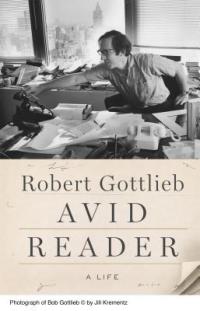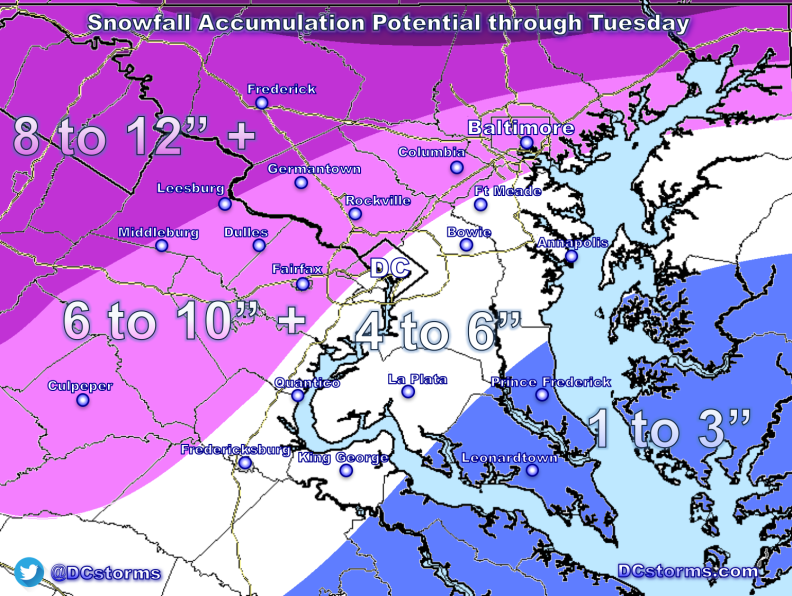1948. WW2 has ended with a tragic record, as the most deadly conflict in human history with over 60 million casualties (about 3% of the world’s population at the time). And even though peace was achieved with great difficulty, the troubles were far from being over: with Moscow and Washington sinking into the Cold War era, the war just switched to a different stage, at the political and ideological level.
Following the end of the conflict, the Allied powers decide on the fate of former Nazi Germany: the country is split up and each of the major winners gets a share. Two separate states are established: even though, in 1948, they still lack government or any form of local decision-making institution, this is the birth of West and East Germany. The former is placed under Western authority (Great Britain, France and the U.S. inherit a portion of the zone) while the latter falls into the hands of the Soviet Union. The capital city of Berlin, though located on the Eastern half, is also divided up accordingly.
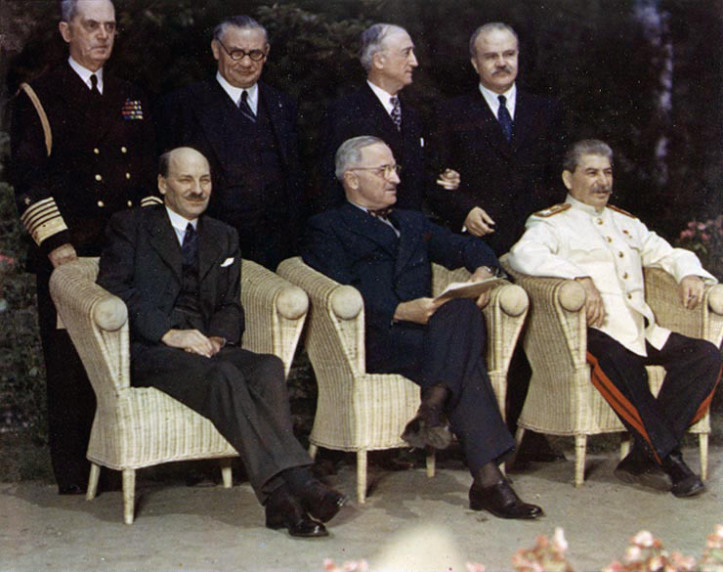 During the Potsdam Conference (July-August 1945), the Allied powers – embodied here by Clement Attlee, Harry Truman and Joseph Staline – decide the partition of Germany. (Source: Wikipedia)
During the Potsdam Conference (July-August 1945), the Allied powers – embodied here by Clement Attlee, Harry Truman and Joseph Staline – decide the partition of Germany. (Source: Wikipedia)
As the period escalates towards mutually assured destruction and fierce rivalry between the U.S.S.R. and the United States, the borders set are highly significant, since they represent a direct point of contact between both superpowers. It is especially the case for Berlin, given its symbolic value, and both sides would use their share to promote their own ideology. This is like playing a game of Risk but, instead of using soldiers to conquest one another’s other territories, players would control diplomats or marketers.
And yet, the early years of the Cold War are not exactly synonymous with diplomacy. Instead, following Germany’s and Berlin’s division, the Soviet Union claims that, as the capital city is situated on its occupation zone, it should remain under its own control. For it is not solved, the crisis ends into the Berlin Blockade, Soviets preventing Allies to access Berlin without their permission. Hence, in March 1948, supplying French, British and American zones in West-Berlin is made impossible, the U.S.S.R. systematically blocking road or rail transportation.
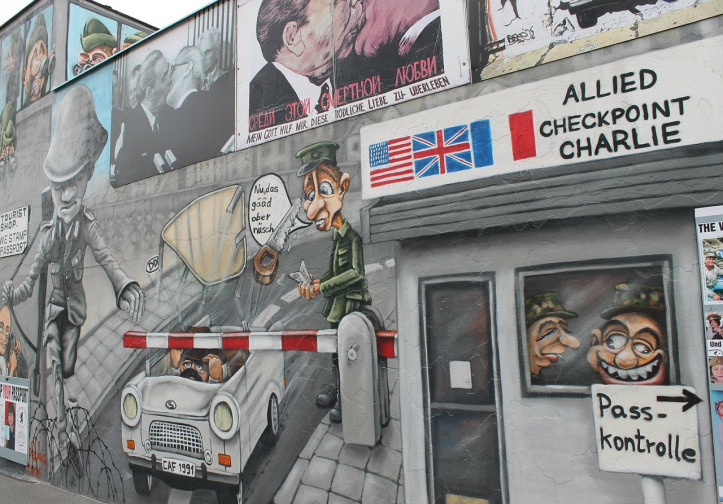 Painting depicting Checkpoint Charlie, the point of passage from East to West-Berlin, at Berlin’s East Side Gallery museum
Painting depicting Checkpoint Charlie, the point of passage from East to West-Berlin, at Berlin’s East Side Gallery museum
Still, Allied powers did not wish to throw in the towel. Thus, they decide to organize an airlift to literally “bomb” the city with food supplies and fuel and bring to West-Berliners whatever they may need. Among the pilots enlisted to take part into the initiative, christened ‘Operation Vittles’, one may find a 28-year old from the U.S. Air Force named Gail Halvorsen.
Gail sure remembers one of his first flights to Tempelhof Airport, West Berlin. Following him landing the plane and its freight at the airport, he saw children from across the barbed-wire fence who addressed him:
When the weather gets so bad that you can’t land, don’t worry about us. We can get by on a little food, but if we lose our freedom, we may never get it back.
Then, Gail reached into his pockets and handed gum over to the children, who happily shared it. This is the precise moment when he decided to start his own initiative, later to be known as ‘Operation Little Vittles’: he warned the kids he would bring more candy on the next day, and indicated he would wiggle its plane’s wings so as to make himself recognized.
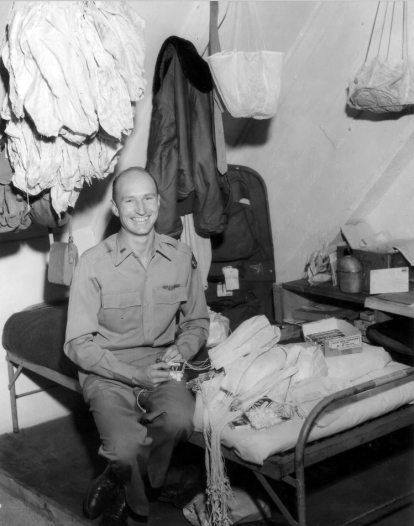 Gail preparing its candy arsenal. (Source: Wikipedia)
Gail preparing its candy arsenal. (Source: Wikipedia)
That night, Gail Halvorsen stuffed all the candy he could gather into boxes, each attached to a handkerchief so that they would land safely. He dropped the tiny parachutes over the next days and weeks, and as he did, the group of children awaiting the ‘candy-bomber’ grew more numerous day after day. With the support of Gail’s hierarchy, the operation could be expanded on a larger scale, as it became known to the general public. U.S. citizens and candy manufacturers would supply the section with candy bars, gum or handkerchiefs, and other pilots would also start to operate the candy-bombing.
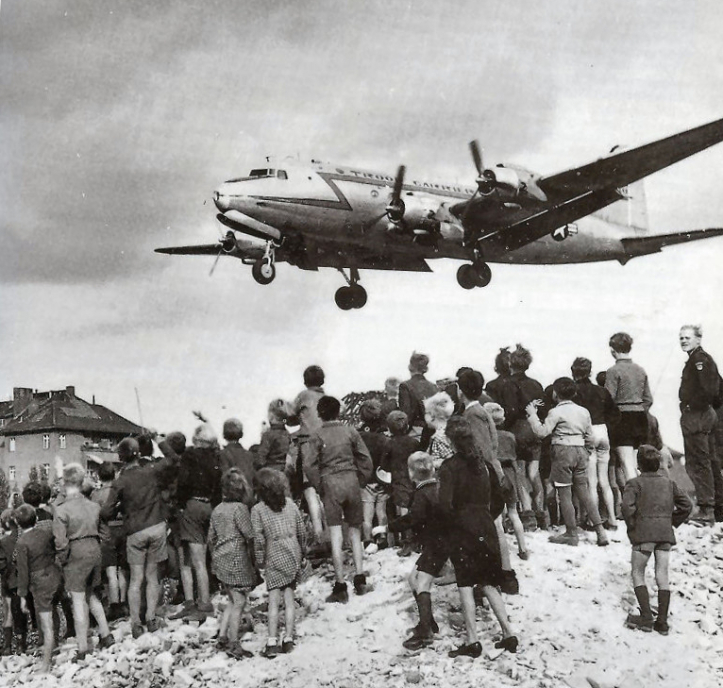 A Douglas C-54 Skymaster landing at Tempelhof, Germany, during the Berlin Blockade, 1948. (Source: US Air Force via Wikipedia, USGOV-PD)
A Douglas C-54 Skymaster landing at Tempelhof, Germany, during the Berlin Blockade, 1948. (Source: US Air Force via Wikipedia, USGOV-PD)
Soon enough, letters and drawings addressed to Onkel Wackelflügel (‘Uncle Wiggly Wings’) were sent to their HQ; that was one in Gail’s many nicknames including Schokoladenflieger (‘Chocolate Flier’) or Rosinenbomber (‘Raisin Bomber’) during that time.
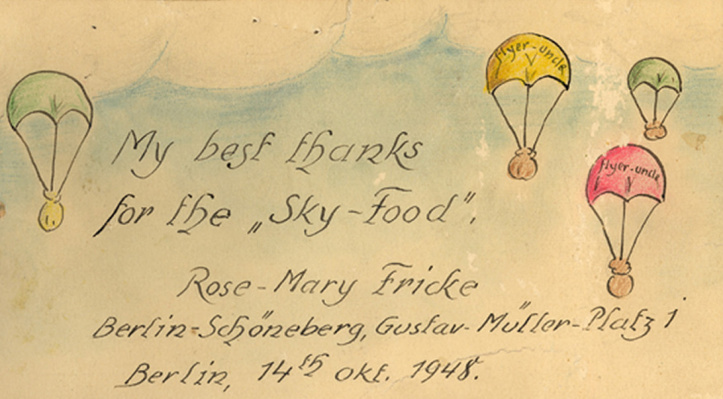 One of the (many) drawings sent to ‘Uncle Wiggly Wings’ from Berlin children, 1948. (Source: Unabridged)
One of the (many) drawings sent to ‘Uncle Wiggly Wings’ from Berlin children, 1948. (Source: Unabridged)
Considering that the blockade had been ineffective, the Soviet Union cancelled it on May 12, 1949. In about a year, more than 270,000 flights had made their way to West Berlin and about 2.3 millions of tons of fuel, food and equipment had been dropped to its inhabitants; plus, thanks to Gail Halvorsen and his many civilian or military supporters, an estimated 23 tons of candy.
The U.S. Air Force pilot hasn’t stopped there: following the movement he initiated during the Berlin Blockade, he also contributed to dropping candy and various items to other nations in war situations, including Bosnia-Herzegovina, Kosovo, Japan, Albania, and Baghdad. But most importantly, he achieved the impossible: getting bombers at wartime to be synonymous with hope.
Sources:
- https://en.wikipedia.org/wiki/Gail_Halvorsen
- https://en.wikipedia.org/wiki/Berlin_Blockade
- https://www.britannica.com/event/Berlin-blockade-and-airlift
- http://www.historynet.com/interview-with-gail-halvorsen-the-berlin-candy-bomber.htm
Spread the word!




